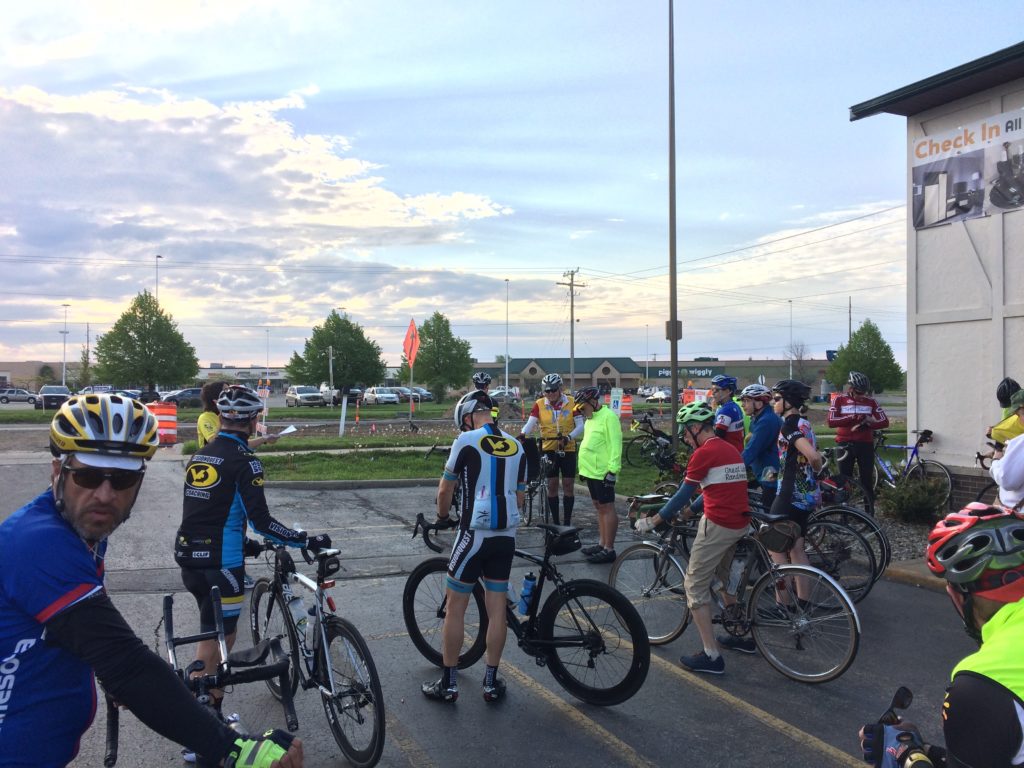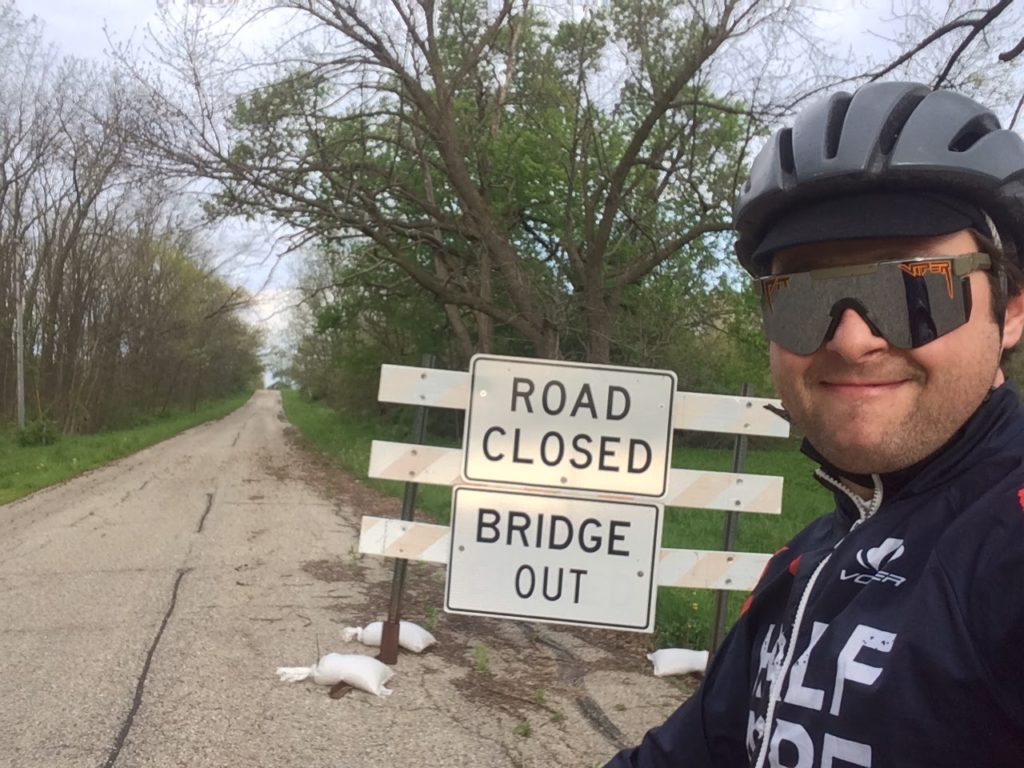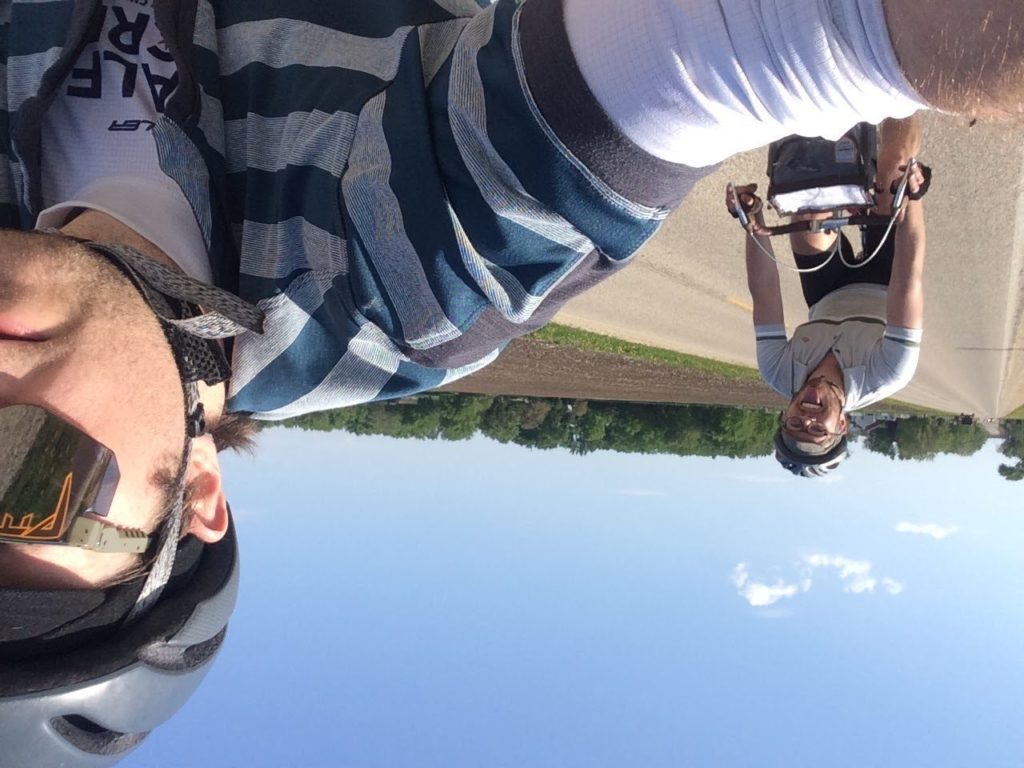On Saturday, I spent 8 hours riding a 126-mile loop around Paul Ryan’s hometown of Janesville, Wisconsin. It wasn’t a race. It wasn’t a charity ride. It was pain management.
The Evansville Classic 200K was my first randonneuring brevet. It was one hell of a—
Wait, what?
What are those words?

Randonneuring. Brevet. I don’t know that I fully understand it. But I know it involves riding for hundreds of miles, racing against the clock (not other people), and accepting no outside help or support. You have a time limit to complete the ride, and you must check in at “controls” along the way to prove you’re not off-course, and to make sure your pacing is OK. Someone at the control signs your cue card, and off you go.
It’s a not a race. There’s no podium. No winners. No prize. The satisfaction comes from merely finishing one of these insanely long rides. At the end, your name is added to an alphabetical list of finishers, regardless of time.
The rides are called “brevets,” which are routed in distances of:
- 200 km (125 mi.) – 13.5 hour time cutoff
- 300 km (186 mi.) – 20 hours
- 400 km ( 250 mi.) – 27 hours
- 600 km (373 mi.) – 40 hours
- 1000 km (621 mi.) – 75 hours
Grand Randonees are 1200 km (746 mi.) with a 90-hour limit. The Super Bowl of these rides (also 1200 km) is Paris-Brest-Paris in France, held every four years. I suppose it’s more like the World Cup.

Randonneuring doesn’t lend itself well to spectating because riders aren’t trying to beat each other. You don’t get any elbow-bumping or sprint finishes the way you’d see in a criterium or stage race like the Tour de France. There aren’t logo-laden kits, camera crews on motorcycles, nor any cowbell-ringin’ hecklers along the course. Your only sponsor is you.
And there’s no SAG vehicle, no aid stations, no mechanics. If something breaks or goes flat, you better have the know-how and tools to fix it. Randos are as low-fi as it gets.


Looking at it another way: Randonneuring isn’t all unlike running a marathon.* Except imagine carrying anything you might need: food, water, extra socks, sunscreen(?). If you couldn’t carry it, you’d have to stop at quite a few 7-Elevens along the course. You’d have a time limit. For longer distance brevets, you’d have multiple days to complete.
*I’ve never run a marathon. Don’t harpoon me.
Sounds like a blast, right? Heh.
So, what’s the point of all this? Here’s one take.
The Loneliness of the Long Distance Cyclist

There’s a short story by Alan Sillitoe that I read in high school called The Loneliness of the Long Distance Runner. It’s a pretty dark story influenced by the despair of the industrial working class in post-WWII England. You can Google the synopsis, but the takeaway is that the protagonist escapes from the drudgery of his life, emotionally and physically, by running.
Don’t get me wrong. Life is pretty good. But we all have some form of a grind. With the grind comes a need to blow off steam. For a certain crop of crazies on two wheels, of which I’m now a member, randonneuring is a way to pedal it out. It’s the only format of cycling where I’ve literally felt the passing of time as physical exertion and mental endurance. Knowing there’s a clock ticking makes you manage every minute, every pedal stroke, every morsel of gas in the tank. During this brevet, time felt as real as water does to a swimmer.

Long-distance bike touring has a similar appeal, with sunset as your cutoff time. Even then, you could keep going with lights and a sense of adventure. Randonneuring relies on a sense of mission. Without any stakes on tour, there’s not the urgency to finish a day’s ride. Knowing your only responsibility is to get up and ride to a completely new place keeps me going on tour.
In the NASCAR-like world of crit racing (and I’d argue cyclocross, too), there’s a saying: Burning your matches. Matches are the limited number of balls-out, anaerobic, full-throttle efforts that a cyclist has to deploy during a race. In the two years I raced crits, burning matches reminded me of when a fighter jet would ditch its fuel tank before engaging in combat.
During the final sprint to the finish, you burn the whole matchbook.

This concept doesn’t exist in randonneuring. I can’t put my finger on it—and perhaps that’s why I’m writing this out at midnight, listening to Bill Callahan—but there’s something to be said about hours upon hours of maintaining momentum. Turning myself inside out and blowing out my motherboard in a crit never left me satisfied (maybe because I never placed better than top 20).
Once your legs hit the 50- or 60-mile mark on a brevet, they seem to know what’s going on: That they’re in for a long day, so they click, adjust, persist. Your mpg goes into HWY, not city. Your legs make friends with inertia and take over, encouraged by the game-like desire to make all the turns listed on the cue sheet. Knowing you can eat & drink whatever you want at the end, shame-free, helps.
And it’s the continuous pedaling with a deadline that makes randonneuring appealing for a hardy, albeit small, group of riders. There were only 40 people registered on my ride, hosted by the Great Lakes Randonneurs, my regional group. It’s the ultimate form of monotasking, punctuated by stops at each control to eat, drink, pee, check your phone, and grab a quick rest. Other riders aren’t competitors. They’re comrades. Though, we’re largely out there on our own. I spent the first 50 miles riding mostly alone into a headwind before meeting a few other riders at the first control in Brodhead. My legs woke up after a Snickers, Gatorade, and McGriddle. I met more riders at the second and third controls, including Eric here, a fellow Chicagoan and rando newb.

Aside from managing your food, water, patience and determination, the last beast to harness is pain. Around 90 to 100 miles, the strain of five, six hours in the saddle reveals the weaker points of the body. Random muscles start twitching. Cramps come and go. Joints you forgot to stretch rudely let you know. Barring a crash or other outside force, you have to deal with random pain. The more colorful phrase in the cycling world is “Harden the Fuck Up.”

Maybe there’s something to the fact Alan Sillitoe once worked in the Raleigh Bicycle Factory in Nottingham that brought his writing to mind.
Here’s a list of animals I saw: Goats, cows, alpacas (llamas?), turkeys, chickens, ducks, peacocks, mini ponies, donkeys, blue herons, and regular roadkill. A red-winged blackbird tried to dive-bomb me but missed (those birds are dicks).
More later on logistics, the bikes, the people, and the things we carry.

Leave a Reply
You must be logged in to post a comment.